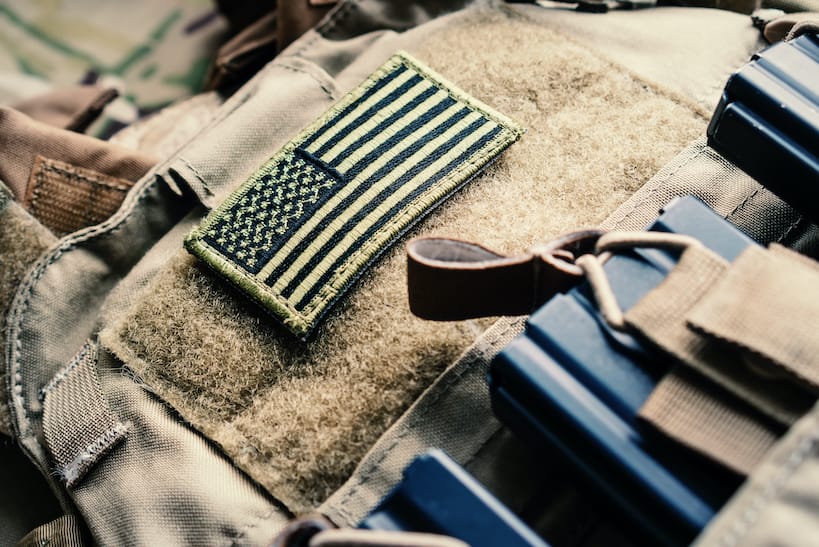If you want body armor to last long, it should be maintained and stored properly. It should be visually inspected for cuts, holes, and other damages on a regular basis.
At first sight, these damages might look insignificant but they can reduce the ballistic performance of plates and make them dangerous to wear.
Once you have checked that body armor is not damaged, you can proceed with cleaning. Vests are usually made from delicate materials, thus, they have to be hand-washed with quality products.
Wondering if there are any other tips and instructions on how to clean a bulletproof vest? In this article, we share everything you need to know about body armor maintenance so a vest provides a guaranteed ballistic performance but also lasts longer.
Read the manufacturer’s instructions
Whether this is your first bulletproof vest or you have purchased it numerous times already, it is crucial to study the manufacturer’s instructions before you start cleaning body armor. The materials a bullet-resistant vest is made from can vary from company to company but also depending on the body armor levels. External and concealable protective wear might also require different cleaning procedures.

You can find the care instructions advised by a manufacturer on the label of a vest. Carefully read them to find out how to clean body armor and what products to use to not damage it.
However, lack of instructions on the label is a negative indicator because according to NIJ (National Institute of Justice) Standard-0101.06, all body armor models should have them.
Use quality cleaning products
It has already been mentioned that body armor fabrics—UHMWPE (ultra-high molecular weight polyethylene) or Kevlar—are delicate, thus, using quality cleaning products is key at this point. Sprays, soap, or other detergents you use to wash a vest should not be harsh to safely clean the fabrics and surfaces.
It is not the best practice to use bleach and odor solution sprays to maintain protective clothing because their components are aggressive. They can gradually damage the delicate fabrics and reduce the lifespan of a bullet-resistant vest.
General rules for cleaning body armor
To clean your body armor properly, follow these steps.
Step 1. Withdraw the panels from the carrier.
Step 2. Damp a piece of soft fabrics or a sponge with cold water and gently wipe the surface of the panels.
Step 3. Naturally air-dry the panels, making sure that they are not exposed to heat. While drying, it should not fold or crease as well.
Step 4. Detach the removable fasteners from the carrier. The straps that are not detachable should be fastened but never try to remove them.
Step 5. Use mild cleaning products and cold water to hand wash the carrier.
Step 6. After washing, rinse well with water and hang the carrier to air-dry indoors.
Mind that it is not recommended to wash or dry the clothes in the machine unless it is otherwise provided by a supplier.
What not to do
When you purchase protective clothing or body armor, you definitely want it to safeguard you from threats and last as long as possible—probably until the expiration date that is usually around five years after it was manufactured.
It might seem that cleaning a bulletproof vest properly is enough but there’s an entire list of things you should avoid during it’s maintenance.
- Don’t soak or submerge the ballistics because water can damage it’s protective properties.
- Refrain from washing your vest with chemicals like bleach or applying deodorant sprays to fabrics. Their aggressive components might decrease the ballistic performance of protection. To choose the right cleaning products, don’t forget to read the supplier’s instructions.
- If it is not written on the label, machine washing and drying are prohibited. A body armor that has been intensively rinsed may void the warranty.
- It is prohibited to iron the panels, as well as expose them to hot temperatures because it can negatively affect the fabrics from which the body armor is made.
- Avoid wearing a bullet-resistant vest that has signs of damage. This might be life-threatening.
- Don’t store body armor in an environment with poor airflow.
Following these tips is extremely important when it comes to the maintenance of protective wear. But you should also store a vest correctly which is another aspect crucial for its continued performance.
How to store a bulletproof vest correctly
In most cases, protective wear should be kept according to the manufacturer’s instructions but there are some general guidelines to follow as well.
For instance, a bullet-resistant vest should be stored flat and indoors. It’s exposure to direct sunlight should be minimized. However, a place where you keep your protective clothing should be dry enough.
You should never place any objects on top of a bulletproof vest. This can cause unexpected damages especially if the vest will be stored without utilization for a long time.
Use a special tough hanger to store protective clothing. Standard hangers that you have for your everyday wear might crack under the heavy weight of a vest. Avoid hanging the vest on straps because it can stretch and modify the fit, thus, become less comfortable to wear.
Wrap up
To make sure a bulletproof vest effectively performs its functions, you should figure out many aspects—from how to wear and clean body armor to how to store it properly.
Although in our daily lives we are used to not paying attention to the manufacturer’s instructions written on the label, this approach can be dangerous with body armor. Wrong actions might damage the vest and reduce its ballistic performance which is indeed life-threatening when an officer is on the battlefield or on a regular shift. Therefore, when purchasing armor, be sure to take your time to sort out all the peculiarities to avoid blunt trauma and other injuries while on duty.